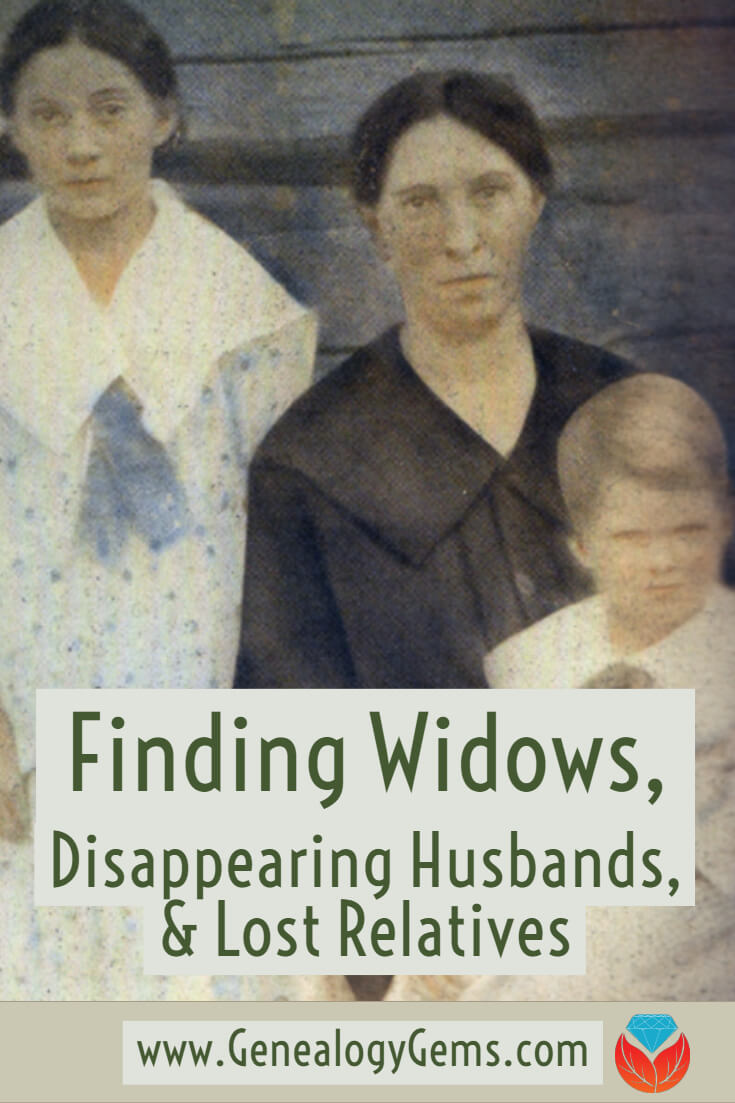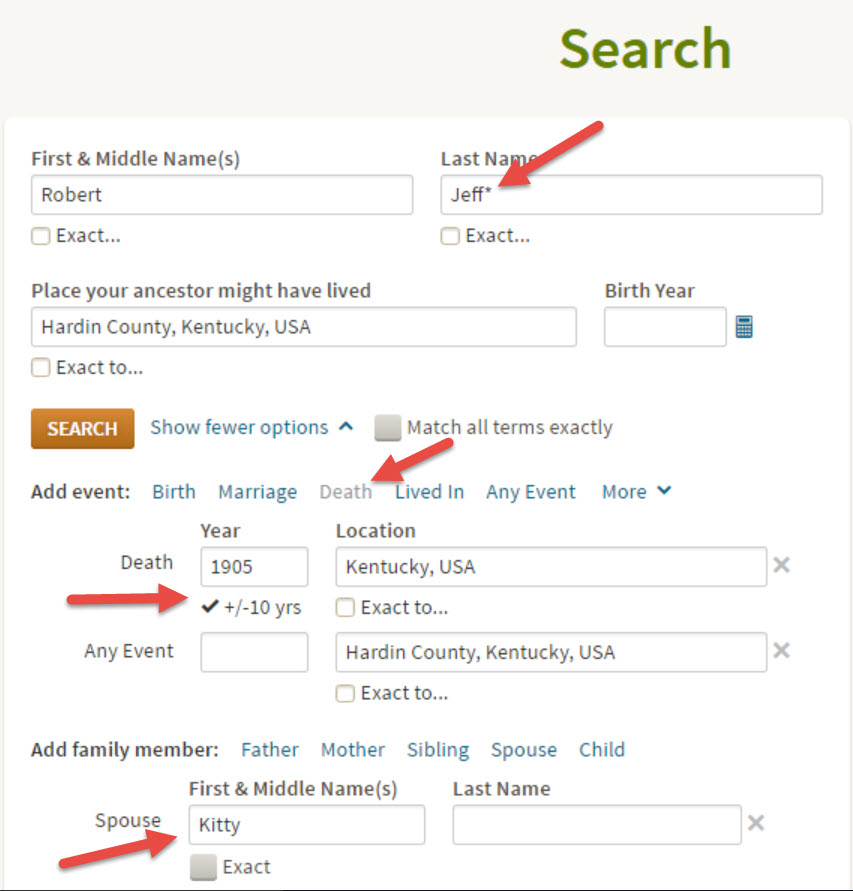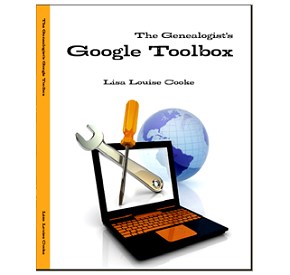Finding Widows, Disappearing Husbands, and Lost Relatives
Great-grandma may be listed as a widow in the 1900 federal census…but she might not actually be a widow after all. Women in the past sometimes claimed widowhood to protect their family’s good name. A recent reader’s question prompted this post for sharing some tips to finding widows, disappearing husbands, and lost relatives.

Widow or Not?
Genealogy Gems reader, Mary, wrote us the following comment:
“My grandmother Kitty’s first husband was Robert Lee Jeffries. They married in 1887 and had 4 or 5 children. He died in the very early 1900’s. She later remarried my grandfather, John, and they had four children together. All this took place in Hardin County, Kentucky. I cannot find when, where, or how her first husband died, or where he is buried. Can you help me?”
I think we can give Mary some tips to help her find Robert. As you read along, consider how these same tips and techniques could help you in finding widows, disappearing husbands, and lost relatives.
Finding Death Records in the Early 1900s
A death record is typically a good way to determine where someone went. If you can locate a death record for your lost individual, they aren’t lost anymore! Finding death records for the time period that Mary is asking about isn’t usually too difficult, unless there has been a record loss for that county. By doing a quick check on FamilySearch wiki for Hardin County, Kentucky, I learned that many records between 1852 and 1911 are missing, including some of the death records. That may be why Mary wasn’t able to find one.
When a death record can’t be found, there are many alternatives that we can exhaust. Cemetery records, newspaper obituaries, and probate records are just a few suggestions. But before we move into alternative records, something caught my attention.
Misspelled Names
With a last name like “Jeffries,” there could be several ways to spell it. Jeffrys, Jefferies, Jeffres, and perhaps many more. What can you do when you have a name, first or last, that could be spelled so many different ways?
One suggestion is to search by each of the possible name spellings, but another tool is to use an asterisk or wildcard. The first part of the surname Jeffries is always the same: J e f f. Whether you are searching records at Ancestry, Findmypast, or MyHeritage, you can use an asterisk after the last “f” to indicate you are looking for any of the possible surname spellings.

I didn’t find any great matches using the criteria you see in the image above, but I took off the death date range and Kitty’s name and found Bob Lee JeffERies living in his parents home in 1880 in Hardin County, Kentucky. Take a close look at this image:

Do you see the mistake? If you look at the digital image of the census, it spells the surname as Jeffries, however the record is indexed as Jefferies. Not to mention that Robert Lee is recorded as Bob Lee. This combination of name differences will always cause a little hiccup in our search process. This is why it is so important to consider name spellings when searching for records.
Even though using an asterisk didn’t produce a death record, you can see how using a tip like this can help when searching for any records online.
Alternatives to Death Records
Like I mentioned before, Hardin county had some record losses. Just because their death records may have been lost or destroyed, doesn’t mean the probate records were.
Using FamilySearch.org, I used the browse option to search probate record books in Hardin county, Kentucky. I found a record dated 25 Apr 1893, in which Kitty wrote her own will. [1] She mentions Lucy (possibly Robert’s mother found in the 1880 census) and others by name. What is strange is there’s no mention of a husband. I wondered if perhaps husband Robert had died before 1893. Unfortunately, there was no Robert Jeffries (or any variation) in the previous record books and the record book that Kitty appeared in was the last one available online.
When no will can be found, that doesn’t mean there is not a probate record available. The next step would be to visit the Hardin County probate office or State Archives to see if there is an estate packet available for Robert.
An estate packet is typically filled with all sorts of genealogy goodies! Receipts, list of heirs, and affidavits may shed light on many a burning question for your targeted ancestor.
The Disappearing Husband
Sadly, not all husband’s leave their families due to their demise. In the past, it was sometimes easier and more appealing to call yourself a widow or widower when your spouse left you. Kitty wrote a will in 1893 and did not mention a husband. In 1900, she was living in her father’s house and her children were divided up among the relatives, including her in-laws. Could Robert have left Kitty and the children? There may only be one way to know for sure.
Kitty remarried. To do that, either Robert had to die or she would need to be divorced. Divorce records can sometimes be located on a county level or at a state archives. I gave Hardin County Clerk of Courts a call and found out that divorce records between the years of 1804 -1995 are held at the Kentucky Department of Libraries and Archives. Their website provided details to ordering several types of records, including divorce records.
Looking in All the Wrong Places
Sometimes, we are so focused on one area that we can’t see past the end of our noses! Many of our ancestors lived on the borders of other counties. Hardin County, Kentucky is especially unique. It borders not only eight other Kentucky counties, but it also borders Harrison County, Indiana. It’s always a good idea to branch out to these nearby locations when you are having trouble locating records.
A Re-cap
When struggling to find a record for any targeted ancestor, try the following:
- Consider alternate name spellings and search for common nicknames.
- When there has been a possible record loss, search for alternative records that may hold the information you are looking for.
- Determine which counties/states your targeted location is bordering and search there for records as well.
Have you found a disappearing person or long, lost relative? If so, share with us (in the comment section below) your story and how you finally tracked the elusive person down. Maybe your story will help others still searching for that missing ancestor!
More Gems on Finding Missing Ancestors
How to Search Your Ancestors’ Other Spouses and Children
6 Sources that May Name Your Ancestors’ Parents
How to Save Time and Find the Ancestors You Are Looking For
Article References
(1) “Kentucky, Probate Records, 1727-1990,” digital images online, FamilySearch (www.familysearch.org : accessed 10 Aug 2016); record for Kitty A. Jeffries, 1893; citing Will Records, Index, 1893-1915, Vol. G, page 12.
Looking for a Living Relative?
Join Lisa Louise Cooke of The Genealogy Gems Podcast as she reveals 9 strategies to find your living relatives. Unleash your inner private eye and discover the tools that will help you connect with long lost cousins who may just hold the key to your genealogy brick wall!
This video class is part of Genealogy Gems Premium eLearning and includes a downloadable handout. Members can click here to watch right now. (Not a member? Click here to sign up!)
Disclosure: This article contains affiliate links and Genealogy Gems will be compensated if you make a purchase after clicking on these links (at no additional cost to you). Thank you for supporting Genealogy Gems!
This article was originally posted on August 24, 2016 and updated on April 18, 2019.
How to Set Up Google Alerts for Genealogy
How can you keep up with new online information on your family history that may appear at any moment? You can’t, unless you run constant searches on your web browser, and who’s got time for that? Google does! And it accomplish that incredible search feat for you through Google Alerts.

Google Alerts is like having your own virtual research assistant! When you key in your favorite searches, Google Alerts will automatically email you when there are new Google results for your search terms.
How to Create a Google Alert for Genealogy
1. Go to www.google.com/alerts.
2. Sign in to your Google account (or create one).
3. The first time you create an alert, click where it says, “You don’t have any Google Alerts. Try creating one.” Fill in the screen that pops up:
4. Type in your search query. In the example above, I’ve entered my specific search: “Larson” “Winthrop” Minnesota.
5. Make selections to further refine your search alert:
- The type of content you’re looking for: news, blogs, videos, discussions, books or everything.
- How often you want to receive the alerts by email.
- The type of results you want to get. You may want to receive all results, not just the best results which will give you an opportunity to see how your search does. You can always change settings later.
6. Enter the email address where you want the alert emails to be delivered. Google will alert you to new content when it is posted on the Web.
Resources for Getting the Most Out of Using Google Alerts

Learn more about how to conduct effective Google searches for genealogy research, Google Alerts for genealogy, and more in my book The Genealogist’s Google Toolbox, Second Edition. This fully-revised 2015 edition is packed with strategies that will dramatically improve your ability to find your family history online!
 Genealogy Gems Premium Members can also watch my full length Google search video classes:
Genealogy Gems Premium Members can also watch my full length Google search video classes:
- Common Surname Search Secrets
- Ultimate Google Search Strategies
- Digging Deeper into Web Sites with Google Site Search
See the complete list of Premium video classes here.
Learn more about Genealogy Gems Premium Membership here!
View-Master Toys are Going Virtual Reality

” The View-Master first appeared in 1939 at the New York Worlds Fair. My View-Master Model C, pictured here, was produced between 1946 and 1955. It was made from bakelite and was the first viewer to have a slot into which the reels were placed for viewing. Believe it or not, all reels made for any view master will work in any model from 1939 to present.” Image by Jack Pearce, Flickr Creative Commons. Image used without changes; find it at https://www.flickr.com/photos/jwpearce/10725366513/.
Did you have a View-Master toy as a kid? Using these stereoscopic viewers (long before kids had cameras of their own), children could see pictures of any topic from Disney to dinosaurs to the 1958 World’s Fair in Brussels. According to a collector, whose image is posted here, “all reels made for any View-Master will work in any model from 1939 to the present.”
Well, this decades-only technology is about to get boosted into the 21st century. According to this news report, “Mattel is teaming up with Google on an upcoming virtual reality-based View-Master that is infused with Google Cardboard VR technology.”
“The Cardboard-based View-Master…will share some design elements with vintage View-Masters, but instead of dropping in a reel, you slide an Android smartphone into the unit. View-Master will work with a custom Mattel app, as well as any Google Cardboard-compatible app, of which there are now about 200 in the Google Play Store.”
Want to learn more about these great vintage toys–or share one with the next generation? Click here to purchase a View-Master Viewer and Reels and click here to purchase Collectible View-Master: An Illustrated Reference and Value Guide. (Thank you! Purchasing from these links helps support the Genealogy Gems podcast and blog.
)
 Did you know that nostalgia buffs (and anyone else) can search Google Patents for fun objects like the View-Master? Click here to see the original patent application materials for the 1939 View-Master, including a design drawing of that first model. Here’s a tip: if your ancestor ever applied for a patent, search Google Patents for his or her name! Learn more about Google Patents–and other fabulous and FREE Google tools you can use for family history–in the new, fully-revised 2nd edition of The Genealogist’s Google Toolbox by Lisa Louise Cooke.
Did you know that nostalgia buffs (and anyone else) can search Google Patents for fun objects like the View-Master? Click here to see the original patent application materials for the 1939 View-Master, including a design drawing of that first model. Here’s a tip: if your ancestor ever applied for a patent, search Google Patents for his or her name! Learn more about Google Patents–and other fabulous and FREE Google tools you can use for family history–in the new, fully-revised 2nd edition of The Genealogist’s Google Toolbox by Lisa Louise Cooke.
